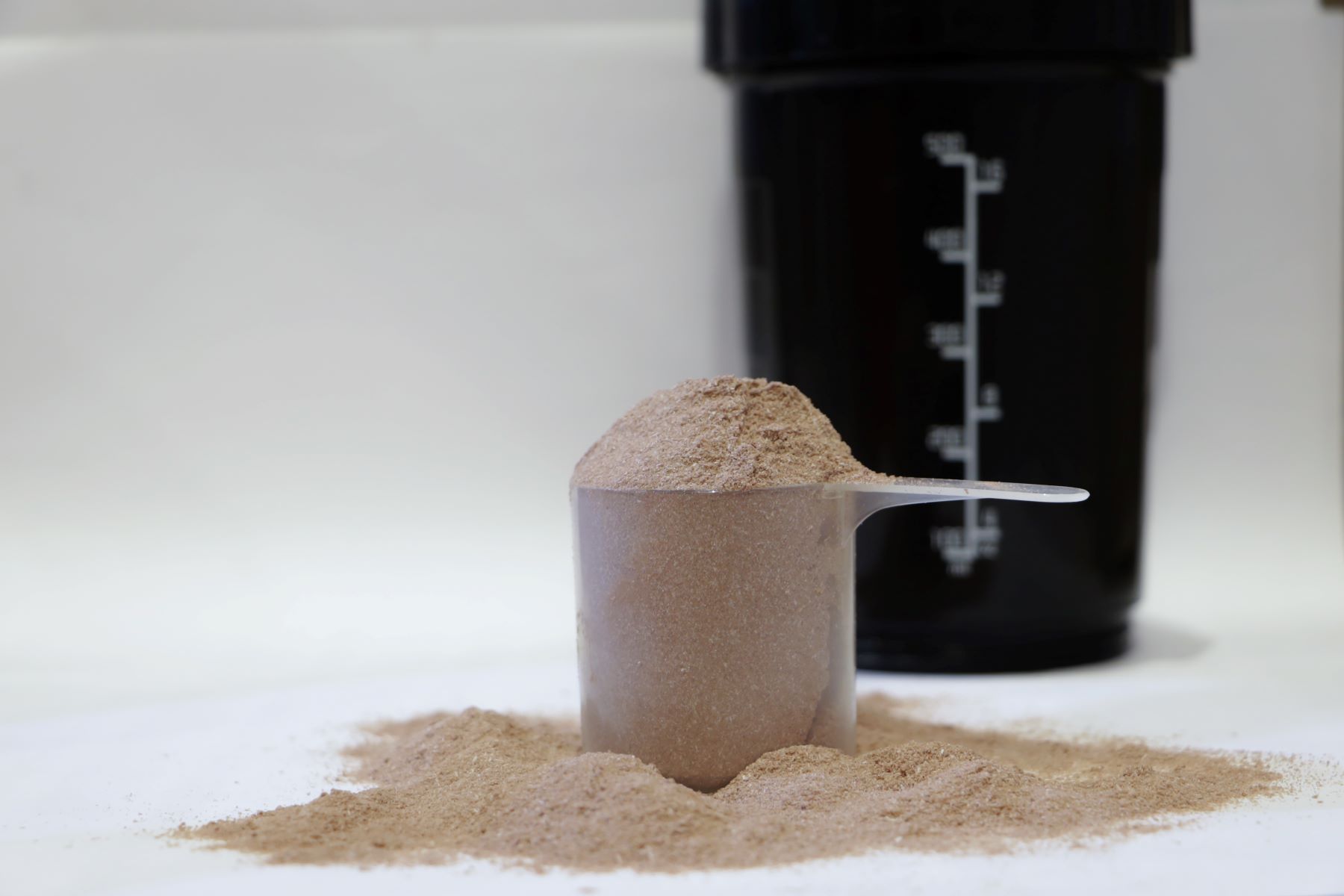Home>Misc>Featured>How Long Should Your Heart Rate Be Elevated After Exercise


Featured
How Long Should Your Heart Rate Be Elevated After Exercise
Published: September 26, 2023
Ensure your heart rate stays elevated post-workout with our featured tips. Discover the ideal duration for an elevated heart rate after exercise to optimize your fitness results.
Introduction
After completing a rigorous workout or exercise routine, it’s common for our hearts to continue beating rapidly for some time. Many of us wonder how long our heart rate should remain elevated after exercise and what it means for our overall fitness level. Understanding the importance of monitoring and maintaining an optimal heart rate after a workout is essential for achieving fitness goals and ensuring overall cardiovascular health.
Monitoring heart rate after exercise is crucial as it provides valuable insights into the body’s response to physical exertion. By tracking heart rate, we can gauge the effectiveness of our workouts, determine if we’re pushing ourselves too hard or not enough, and make necessary adjustments to our training plans.
The duration for which our heart rate remains elevated after exercise differs from person to person due to various factors. Age, fitness level, intensity and duration of the workout, and overall health play a significant role in determining heart rate recovery time. Additionally, understanding the optimal heart rate recovery time for our individual body is crucial for maximizing performance and reducing the risk of potential complications.
In this article, we will delve into the factors that influence heart rate recovery time, discuss the benefits and risks of prolonged or delayed recovery, provide guidelines for monitoring heart rate after exercise, and offer strategies to improve heart rate recovery time. By gaining a deeper understanding of this topic, you can optimize your post-workout recovery and enhance your overall physical well-being.
Importance of Monitoring Heart Rate After Exercise
Monitoring heart rate after exercise is crucial for several reasons. It provides valuable information about our cardiovascular health and helps us gauge the efficiency of our workouts. By understanding the importance of monitoring heart rate after exercise, we can make informed decisions to optimize our training and achieve our fitness goals.
Firstly, monitoring heart rate after exercise allows us to assess our cardiovascular fitness level. A rapid drop in heart rate following a workout indicates good cardiovascular health and fitness. On the other hand, a slow recovery or sustained elevation in heart rate might signify a need for improvement in our fitness regimen.
Furthermore, heart rate monitoring provides insights into our body’s response to physical exertion. By tracking our heart rate during and after exercise, we can determine if we are working at an appropriate intensity level. If our heart rate remains elevated for an extended period, it could indicate that we are pushing ourselves too hard or need to modify our training routine.
Heart rate monitoring also helps to assess the effectiveness of our workouts. By comparing heart rate data over time, we can identify trends and patterns that indicate progress or plateau. This information allows us to make necessary adjustments to our training plans, ensuring continuous improvement and preventing stagnation in our fitness journey.
In addition to improving fitness performance, monitoring heart rate after exercise can also help identify potential health issues. A prolonged elevation in heart rate or a delayed recovery could be a sign of underlying cardiovascular problems or overtraining. By detecting these issues early on, we can take appropriate measures to address them and protect our overall health.
Overall, monitoring heart rate after exercise is a powerful tool for optimizing our fitness routine and ensuring cardiovascular well-being. It allows us to evaluate our fitness level, track progress, and detect any potential health concerns. By paying attention to our heart rate recovery, we can make informed decisions about our training intensity and make adjustments for better results. In the following sections, we will discuss the factors influencing heart rate recovery time, as well as guidelines and strategies to improve heart rate recovery after exercise.
Factors Influencing Heart Rate Recovery Time
The time it takes for our heart rate to return to its resting state after exercise, known as heart rate recovery time, is influenced by several factors. Understanding these factors can help us interpret our heart rate data and make adjustments to our training routine accordingly.
1. Fitness Level: Individuals with a higher level of cardiovascular fitness tend to have a faster heart rate recovery time. Regular physical activity and exercise improve the efficiency of the heart, allowing it to pump more blood with fewer beats. As a result, the heart can return to its resting state more quickly after intense exercise.
2. Age: Age is another factor that influences heart rate recovery time. As we age, our heart muscles may become less efficient, resulting in a slower recovery time. However, regular exercise can help mitigate this effect and maintain a healthier heart rate recovery time.
3. Exercise Intensity and Duration: The intensity and duration of the exercise play a significant role in determining heart rate recovery time. Higher-intensity workouts and longer durations generally lead to a longer recovery period. This is because the body needs more time to replenish oxygen stores, remove metabolic waste, and restore the heart’s resting state after intense exertion.
4. Body Position: Body position can also affect heart rate recovery time. Standing or sitting upright after exercise can promote faster recovery compared to lying down. When we stand or sit, the force of gravity aids in venous return, helping blood flow back to the heart and reducing recovery time.
5. Environmental Factors: Various environmental factors can impact heart rate recovery. Heat and humidity can increase heart rate and prolong recovery time, as the body needs to work harder to regulate its temperature. Altitude can also affect heart rate recovery, as the lower oxygen levels at higher altitudes put additional strain on the cardiovascular system.
6. Health Conditions: Certain health conditions, such as cardiovascular diseases or autonomic nervous system disorders, can impair heart rate recovery. These conditions may affect the heart’s ability to efficiently regulate heart rate and return to its resting state after exercise. It’s important to consult with a healthcare professional if you have any underlying health conditions that may impact your heart rate recovery.
By considering these factors, we can better understand our heart rate recovery time and make informed decisions about our training intensity and recovery strategies. In the following sections, we will discuss how to determine optimal heart rate recovery time, as well as the benefits and potential complications of delayed heart rate recovery.
Determining Optimal Heart Rate Recovery Time
Optimal heart rate recovery time is the duration it takes for the heart rate to return to its resting state after exercise. Determining this optimal recovery time provides valuable insights into our cardiovascular fitness and overall health. There are a few methods to assess and calculate our heart rate recovery time:
1. One-Minute Recovery Test: This simple test involves measuring the heart rate immediately after exercise and then again after one minute of rest. Subtracting the second measurement from the first gives the heart rate recovery in beats per minute (BPM). A faster recovery rate indicates better cardiovascular fitness.
2. Two-Minute Recovery Test: Similar to the one-minute recovery test, this method involves measuring the heart rate immediately after exercise and then again after two minutes of rest. Comparing the two measurements provides a more comprehensive assessment of heart rate recovery.
3. Percentage-Based Recovery Test: This method involves calculating the percentage decrease in heart rate after a specific duration of rest, such as two or five minutes. The percentage decrease is determined by dividing the difference between the exercise heart rate and the recovery heart rate by the exercise heart rate and multiplying by 100. A higher percentage indicates a faster recovery time.
It’s important to note that the specific measurement of optimal heart rate recovery time can vary depending on individual factors and the type of exercise performed. It’s best to consult with a healthcare professional or a certified fitness trainer to determine the most appropriate method and interpretation for your specific situation.
Once we determine our optimal heart rate recovery time, we can use this information to set goals and track our progress over time. Ideally, our heart rate should return to within 20 BPM of our resting heart rate within the specified recovery time. If it takes longer for our heart rate to recover or if the recovery is incomplete, it may indicate a need for modifying our exercise routine or addressing potential underlying health issues.
Monitoring heart rate recovery time can help us assess the effectiveness of our workouts and make necessary adjustments to optimize our training. It allows us to tailor our exercise intensity, duration, and recovery strategies to achieve the most efficient cardiovascular training. Additionally, consistent monitoring and improvement in heart rate recovery time can significantly reduce the risk of cardiovascular diseases and improve overall long-term wellness.
Next, let’s explore the benefits of prolonged elevated heart rate after exercise and the potential risks and complications associated with delayed heart rate recovery.
Benefits of Prolonged Elevated Heart Rate After Exercise
Experiencing a prolonged elevated heart rate after exercise, also known as a post-exercise heart rate plateau, can offer several benefits to our overall fitness and well-being. While it is important to note that an extended elevation in heart rate may not be desirable in all cases, there are specific instances where it can be advantageous.
1. Increased Calorie Burn: Sustaining an elevated heart rate post-exercise can contribute to increased calorie burn. During this period, the body continues to expend energy to restore oxygen levels, remove metabolic waste, and repair muscles. This extended calorie burn can help with weight management and fat loss.
2. Enhanced Cardiovascular Conditioning: A prolonged elevated heart rate challenges and strengthens the cardiovascular system. By maintaining an elevated heart rate, we provide a sustained stimulus to our heart and blood vessels, promoting cardiovascular adaptation and improved endurance.
3. Improved Oxygen Delivery and Recovery: A sustained elevation in heart rate helps ensure optimal blood flow and oxygen delivery to working muscles. This increased blood flow aids in the removal of waste products and replenishes depleted energy stores, facilitating quicker recovery and reducing muscle soreness.
4. Enhanced Fitness Performance: Prolonged elevated heart rate after exercise can lead to improved performance during subsequent workouts. By maintaining a high heart rate for an extended period, we stimulate the body to adapt and become more efficient in utilizing oxygen, resulting in greater endurance and overall fitness gains.
5. Positive Impact on Metabolism: Keeping the heart rate elevated after exercise can have a positive impact on our metabolism. It can enhance the body’s ability to mobilize and utilize stored energy sources, such as carbohydrates and fats, resulting in improved metabolic efficiency and potential weight loss benefits.
It is important to note that prolonged elevated heart rate after exercise may not be suitable for everyone, especially those with certain health conditions or those who require specific recovery protocols. It’s important to listen to our bodies and consult with a healthcare professional or fitness expert to determine the most appropriate approach for our individual needs.
In the following section, we will explore the potential risks and complications associated with delayed heart rate recovery and how to monitor and manage our heart rate after exercise.
Risks and Potential Complications of Delayed Heart Rate Recovery
Delayed heart rate recovery, where the heart rate takes longer than usual to return to its resting state after exercise, can indicate underlying issues and potentially lead to complications. Monitoring and understanding the risks associated with delayed heart rate recovery is essential for maintaining cardiovascular health.
1. Increased Cardiovascular Strain: When the heart rate remains elevated for an extended period after exercise, it places increased strain on the cardiovascular system. This can lead to prolonged elevation in blood pressure, added stress on the heart muscle, and potential damage to blood vessels.
2. Reduced Recovery Capacity: Delayed heart rate recovery can indicate reduced recovery capacity, meaning the body is taking longer to return to its resting state. This can result in prolonged feelings of fatigue, decreased energy levels, and impaired ability to perform daily activities.
3. Impaired Fitness Progress: Delayed heart rate recovery may hinder fitness progress and performance improvements. It indicates that the cardiovascular system is not adapting as effectively to exercise, limiting the body’s ability to push harder and make gains in endurance and overall fitness.
4. Increased Risk of Cardiovascular Events: Prolonged elevation in heart rate after exercise, especially if coupled with delayed recovery, can increase the risk of cardiovascular events such as heart attacks and strokes. It may indicate underlying cardiovascular conditions that need to be addressed to reduce the risk of these events.
5. Overtraining and Inflammation: Delayed heart rate recovery can be a sign of overtraining, where the body has not had adequate time to fully recover between workouts. This can lead to chronic inflammation, increased susceptibility to injuries, and a decline in overall performance.
6. Underlying Health Issues: Delayed heart rate recovery can sometimes indicate underlying health conditions such as heart disease, autonomic nervous system dysfunction, or hormonal imbalances. These conditions may require medical attention and management to prevent further complications.
It’s important to note that occasional instances of delayed heart rate recovery may not be cause for immediate concern. Factors such as high-intensity workouts or external stressors can temporarily impact recovery time. However, if delayed heart rate recovery becomes a consistent occurrence or is accompanied by other concerning symptoms, it’s crucial to consult with a healthcare professional for proper evaluation and guidance.
In the next section, we will discuss guidelines for monitoring and evaluating heart rate after exercise to ensure optimal cardiovascular health and recovery.
Guidelines for Monitoring Heart Rate After Exercise
Monitoring heart rate after exercise is essential for evaluating our cardiovascular health and optimizing our fitness routine. By following these guidelines, we can effectively track and interpret our heart rate data to ensure proper recovery and overall well-being.
1. Measure Immediately After Exercise: Take your heart rate measurement immediately after concluding your workout. This will provide a baseline heart rate to compare with your recovery rate.
2. Use a Heart Rate Monitor: Utilize a heart rate monitor during exercise, as it provides real-time data and ensures accuracy in tracking your heart rate. Many fitness trackers and smartwatches offer built-in heart rate monitoring capabilities.
3. Observe Recovery Time: Monitor your heart rate for a specific duration of time after exercise, such as one minute or two minutes. Note how quickly your heart rate starts to decrease and the overall recovery rate.
4. Evaluate Recovery Percentage: Calculate the percentage decrease in heart rate by comparing your exercise heart rate with your recovery heart rate. This can provide a quantitative measure of your heart rate recovery.
5. Compare with Resting Heart Rate: Compare your post-exercise heart rate with your resting heart rate, which is the heart rate when you are completely at rest. The closer your post-exercise heart rate is to your resting heart rate, the quicker your recovery.
6. Establish Baseline Data: Over time, establish baseline heart rate recovery data specific to your fitness level and body. This will help you identify trends and assess any improvements or potential issues.
7. Take Note of Variations: Pay attention to any variations in your heart rate recovery from one workout to another. If you notice consistently delayed recovery or unusual patterns, consult with a healthcare professional or fitness expert for further evaluation.
8. Listen to Your Body: It’s essential to listen to your body and be aware of any symptoms like dizziness, chest pain, or shortness of breath during or after exercise. If you experience any concerning symptoms, seek medical advice promptly.
Remember that heart rate recovery is an individualized process, influenced by factors like age, fitness level, and overall health. It’s important to approach heart rate monitoring as a tool for understanding your body’s response to exercise and adjusting your routine accordingly.
By following these guidelines, you can gain valuable insights into your cardiovascular fitness, track your progress, and optimize your training for better overall health and performance.
In the next section, we will offer strategies to improve heart rate recovery time and enhance cardiovascular fitness.
Strategies to Improve Heart Rate Recovery Time
Improving heart rate recovery time can enhance cardiovascular fitness and overall health. By implementing the following strategies, you can promote optimal recovery and enhance your body’s ability to return to its resting heart rate after exercise.
1. Gradually Increase Exercise Intensity: Gradually increase the intensity of your workouts over time to allow your cardiovascular system to adapt. This progressive approach can help improve heart rate recovery by strengthening the heart and improving its efficiency in pumping blood.
2. Incorporate Interval Training: Interval training involves alternating between high-intensity exercise and periods of active recovery. This type of training can enhance heart rate recovery by challenging the cardiovascular system and promoting efficient oxygen utilization.
3. Focus on Aerobic Exercise: Aerobic exercises, such as running, cycling, swimming, or dancing, are particularly effective in improving heart rate recovery. These activities target the cardiovascular system, promoting cardiovascular endurance and efficient heart function.
4. Implement Regular Rest Days: Incorporate rest days into your training routine to allow for proper recovery. Giving your body time to rest and repair will improve heart rate recovery and prevent overtraining, which can hinder progress and increase the risk of injury.
5. Include Strength Training: Strength training exercises, such as weightlifting or bodyweight exercises, can improve overall cardiovascular fitness and heart rate recovery. The increased muscle strength and endurance gained from such exercises enhance the heart’s ability to pump efficiently.
6. Maintain a Balanced Diet: Nourish your body with a balanced diet that includes lean proteins, healthy fats, whole grains, and plenty of fruits and vegetables. Proper nutrition supports cardiovascular health and aids in overall recovery and rejuvenation.
7. Stay Hydrated: Proper hydration is crucial for maintaining optimal cardiovascular function. Drink sufficient water throughout the day to ensure that your body can effectively transport oxygen and remove metabolic waste, aiding quicker recovery.
8. Get Adequate Sleep: Quality sleep is essential for recovery and overall health. Aim for seven to nine hours of uninterrupted sleep each night to promote healthy heart function and faster heart rate recovery after exercise.
9. Manage Stress Levels: Chronic stress can negatively impact heart rate recovery. Practice stress management techniques such as meditation, deep breathing exercises, or engaging in hobbies or activities that help you relax and unwind.
10. Consult with a Professional: If you’re experiencing persistent issues with heart rate recovery, or if you have any underlying health concerns, it’s recommended to consult with a healthcare professional or certified fitness trainer. They can provide personalized guidance and advice tailored to your specific needs.
By implementing these strategies, you can improve your heart rate recovery time, enhance your cardiovascular fitness, and support overall well-being. Remember to listen to your body, be patient with your progress, and make adjustments to your routine as needed.
In the final section, we will conclude our discussion on heart rate recovery with a summary of the key points covered in this article.
Conclusion
Monitoring heart rate after exercise is a vital aspect of optimizing our fitness routine and maintaining cardiovascular health. By understanding the factors influencing heart rate recovery time, determining the optimal recovery time, and recognizing the benefits and potential risks associated with heart rate recovery, we can make informed decisions about our training and recovery strategies.
Factors such as fitness level, age, exercise intensity and duration, body position, environmental conditions, and underlying health conditions play a significant role in heart rate recovery. By taking these factors into consideration, we can better interpret our heart rate data and make necessary adjustments to achieve optimal cardiovascular fitness.
Prolonged elevated heart rate after exercise can offer benefits such as increased calorie burn, improved cardiovascular conditioning, enhanced oxygen delivery and recovery, improved fitness performance, and positive effects on metabolism. However, it is crucial to monitor for delayed heart rate recovery, as it can indicate increased cardiovascular strain, reduced recovery capacity, impaired fitness progress, increased risk of cardiovascular events, overtraining, or underlying health issues.
To monitor heart rate after exercise effectively, it is recommended to measure immediately after exercise, utilize a heart rate monitor, observe recovery time, evaluate recovery percentages, compare with resting heart rate, establish baseline data, take note of variations, and listen to our bodies. These guidelines allow us to gather accurate information and track progress in optimizing our heart rate recovery.
Furthermore, implementing strategies to improve heart rate recovery time, such as gradually increasing exercise intensity, incorporating interval training, focusing on aerobic exercise, including strength training, maintaining a balanced diet, staying hydrated, getting adequate sleep, and managing stress levels, can contribute to enhanced cardiovascular fitness and overall well-being.
In conclusion, monitoring heart rate after exercise, understanding the factors influencing heart rate recovery, determining optimal recovery time, and implementing strategies to improve recovery are essential for optimizing our fitness routine and safeguarding our cardiovascular health. By paying attention to our heart rate data and making necessary adjustments, we can achieve better performance, reduce the risk of complications, and promote long-term wellness.








